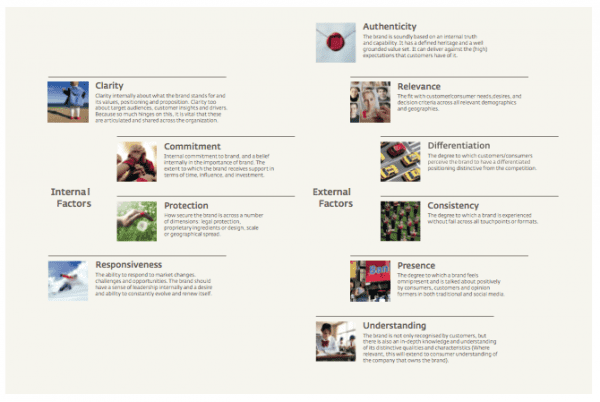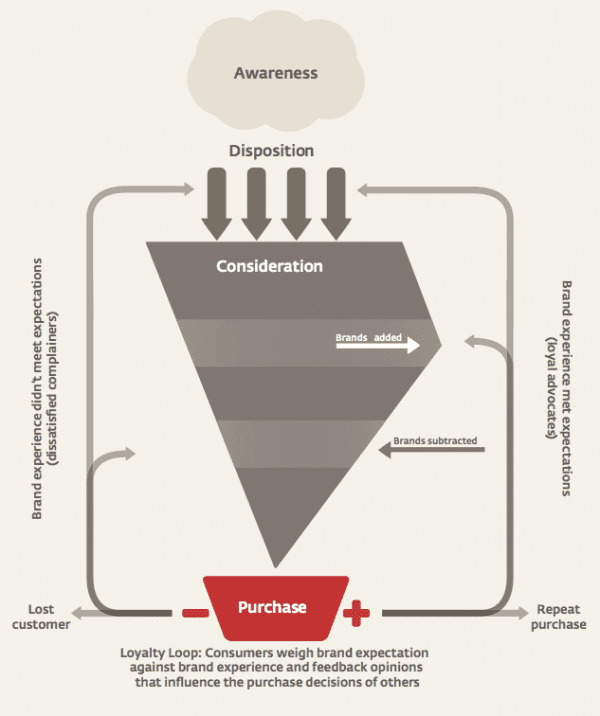Stop whining and start winning with the power of integrated digital brand experiences
Aren’t marketers often a bunch of whiners? I listen to myself sometimes, comparing how complex marketing is now, the speed of change... I can make it sound negative, and it isn’t, in a post-digital world brands have never had opportunity like this. Honestly, I believe that.
Post-digital? It makes me smile when I hear that, only because I agree with the term. We have watched ‘digital’ be both the underdog to above the line advertising and, from a channel perspective, have seen how it’s come to dominate through search and social. And now I feel it’s totally irrelevant to even talk about digital. It’s risky, dangerous and misleading. We are post-digital for one simple reason…
Everything is digital
It really is. We know of course that mobile and social media have changed the ‘how’ and ‘where’ in people learning more about the things that they’re interested in, let alone in their sources of entertainment and the behaviour of consuming content on the go. This impacts how they learn about your brand (or not), and your competitor’s brands (or not). It still astounds me how companies in the majority just don’t see or worry about this, evidenced by the huge scale of disastrously low quality advertising, the stuff designed to interrupt and cajole as though it’s still 1960–1990 TV. The world is now, to all intents and purposes, for most organisations, digital. Your customer or consumer is online and connected. The recent Customer acquisition sources research by the DMA shows that 4 of the top 5 ways of acquiring customers are digital. This is good news though, stuff to celebrate. We have data, insight, most of our customers are (in theory) reachable, on a near daily basis.
From a marketing or sales perspective, I’d translate this to colleagues of old as “we’ve more to go at - we can reach more people at different stages of the purchase funnel”. It does mean we have to think differently about the role of marketing, as the means not the end, and instead think about consumers as people - about their beliefs and behaviours. We need to have a plan in the how we’ll connect with those consumers, that we’re in the room when the trigger/need/desire to purchase happens (if not purchase for you - whatever your business/commercial goals are. Being visible / in the room / front of mind / whatever you want to call it, requires that you are adding a tangible value on an almost (ideally) daily basis, beyond your range of products and services. Which leads me to the second key point…
Everything is brand
In an all-digital, mobile-led environment, where social networks and news platforms ensure that information and inspiration finds me, I am not waiting for your new stuff. I am entertained, occupied and to all intents and purposes, I am busy. That said, if your brand can add value and serve me in some way outside of product transactions, your brand is potentially welcomed, it is the connection point between me the consumer and your business. The part of your organisation that I trust and feel something for, the element that has the consistent story. I talk about the value of my brand new ‘Dyson’ vacuum cleaner; stories of power, engineering, quality, design and innovation, why I couldn’t possibly justify a different purchase decision after the demise of my old vacuum cleaner (the purchase trigger), I don’t talk about buying the DC–39 or the DC–59, or even about cyclone technology.
Brands have the power to change the world
This ‘line’ belongs to a classic Interbrand digital branding report, by Jez Frampton, one I’d urge you to read, and re-read. In it the authors describe brands as living business assets that are owned by business but evolved daily by consumers, and that, I feel, is the critical insight when you think of modern (digital, if you like) marketing. The importance of digital + brand becomes real. Take a look at the 10 pillars of digital branding from the report and think about well your business delivers these. They prompt the questions: Who is responsible for enhancing the brand, protecting the brand, adding value to customers by creating better digital experiences for customers? They show the importance of a strategic approach to online branding based customer personas and creation of digital value propositions.

Digital Branding - 10 pillars according to Interbrand
The Doc Searle “Markets have become conversations” mantra starts to feel like opportunity, rather than a threat? That investing in your brand to help make people feel something, to remember you, feels like huge opportunity over expense?
“Digital can and should be seen as central to all brand building activities" Interbrand report
We’ve written before of the changing consumer behaviour, and the McKinsey loop model and essentially Interbrand are building on that work, clarifying the role of brand and digital in the consumer’s purchase loop.

The McKinsey (and Google ZMOT) inspired Interbrand brand loyalty loop
Three key take-aways?
So what are the critical take-aways around digital branding and the Interbrand report? There are more than three (make sure that you read it), but given this is a blog post and accepting I need to pick a few, here goes...
- Demonstrate that your brand is as alive as the market it serves. I love this expression. This is the key mantra if, like Interbrand, we can believe that brands are business assets to be activated in some way. It gives a whole more potential than thinking about, and getting lost in “social media”, or worse - worrying about “Facebook Likes”.
- Recognise the purchasing revolution. To create change at the business level, and recognise the power of brand, we need to recognise that people purchase in whole new ways. Both Google ZMOT and McKinsey’s purchase loop - we can rest assured this is not here-say, the world has changed and consumers no longer go through a linear decision making process. Your brand has the choice to play a role in the new process.
- Responsiveness is relevance. By the nature of brands surviving and thriving they need to be relevant to be talked about, they need to be responsive to be a part of the market conversations in order to be visible and earn a disproportionate share of consumer attention. Businesses therefore have to recognise the role of their brand, and that concepts such as power, communication, authority and even decision making are shifting away from the business, via brand, and towards the consumer. And that this is the new secret to success, not a loss or threat to the status quo.
Do let us know in the comments what you see, and what you think of the Interbrand Digital Branding report.

















